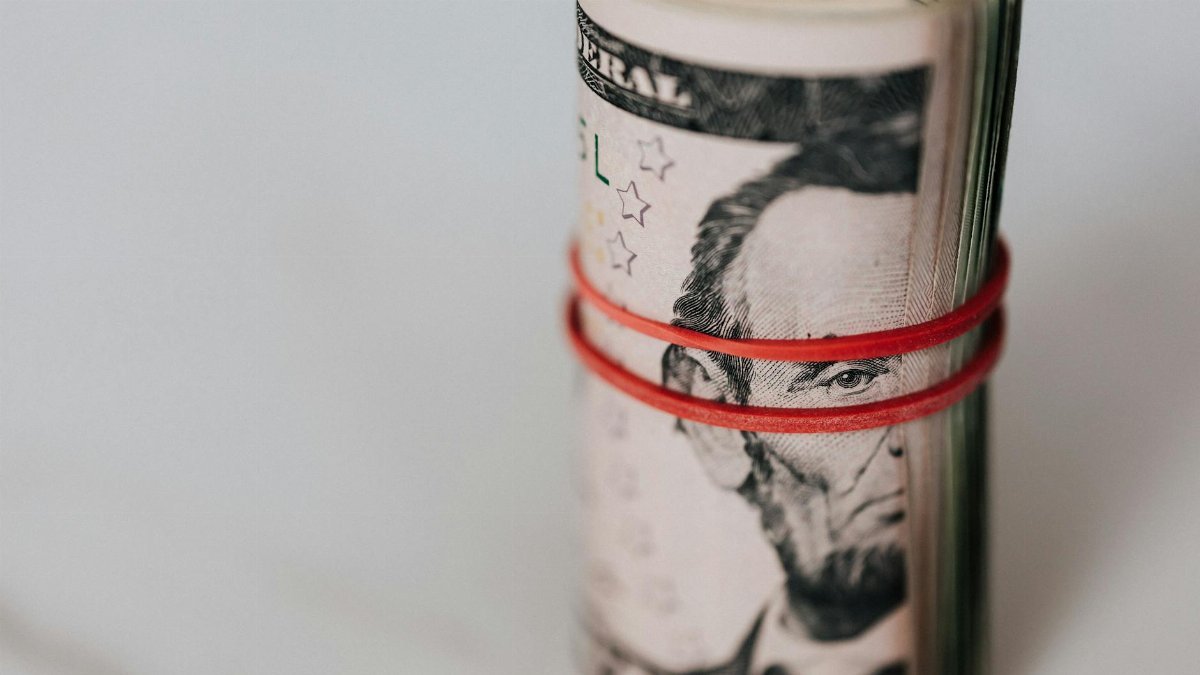Imagine a quiet, steady force in the financial world, one that rewards patience over flash. That’s the allure of the dividend aristocrats list—a collection of companies that have not only paid dividends but increased them for at least 25 consecutive years. These are the stalwarts of the stock market, firms that have weathered recessions, tech bubbles, and global crises, all while putting cash back into shareholders’ pockets. For many middle-aged investors, especially those eyeing retirement, this list isn’t just a curiosity; it’s a potential cornerstone of financial security. In a landscape of volatile crypto and meme stocks, these names offer something rare: reliability. But what makes these 14 standouts tick? How do they sustain such consistency, and what can they teach us about building wealth in 2025 and beyond? Let’s unpack their stories.
Defining the Dividend Aristocrats

The term “dividend aristocrats” carries weight. It refers to a select group of S&P 500 companies that have raised their dividends annually for at least a quarter-century. Think of it as a badge of honor, earned through disciplined management and a focus on long-term stability. These aren’t the high-flying tech startups promising moonshot gains; they’re often in unglamorous sectors like consumer goods, utilities, or industrials. Yet, their track record speaks volumes. For investors, especially those in their 40s and 50s looking to balance growth with safety, the dividend aristocrats list offers a kind of financial anchor. It’s not about getting rich quick—it’s about getting rich slow, with less sleepless nights.
Why 25 Years Matters

Twenty-five years of consistent dividend increases isn’t just a number; it’s a testament to resilience. A company that achieves this has survived multiple economic cycles—think the dot-com crash, the 2008 financial meltdown, and the pandemic’s uncertainty. Each time, they didn’t just hold steady; they rewarded shareholders with more. This kind of staying power signals a business model built for endurance, not hype. According to data from S&P Dow Jones Indices, these companies often outperform broader market indices over long periods, especially during downturns. For someone planning retirement in 2025 or beyond, that’s not just comforting—it’s critical.
The Power of Compounding Returns

Here’s where the magic happens. Reinvesting dividends from aristocrats can turn modest investments into significant wealth over decades. Picture a small-town investor who bought shares of a dividend aristocrat like Procter & Gamble in the 1990s. Each year, the dividend grew, and by reinvesting it, they bought more shares without dipping into their savings. Fast forward to today, and that initial stake could be a nest egg. A study by Hartford Funds shows that dividends have accounted for roughly 40% of the S&P 500’s total return since 1930. For middle-aged investors, this isn’t just theory—it’s a strategy to outpace inflation and build a buffer.
Meet the 14 Standouts

Among the dividend aristocrats list, 14 companies shine with particularly impressive streaks of 25-plus years. Names like 3M, Coca-Cola, and Johnson & Johnson often top this elite group. These aren’t just household brands; they’re financial fortresses. Coca-Cola, for instance, has raised its dividend for over 60 years, surviving shifts in consumer tastes and global competition. Johnson & Johnson, with a similar streak, has balanced innovation in healthcare with steady payouts. Data from Dividend.com tracks these firms closely, showing how their yields, while not always the highest, offer consistency that speculative stocks can’t match. These 14 are a masterclass in durability.
Consumer Staples: The Backbone of Stability

Several of these 14 aristocrats hail from consumer staples—think Coca-Cola, PepsiCo, and Colgate-Palmolive. These companies sell products people buy no matter the economy: soda, snacks, toothpaste. It’s not sexy, but it’s steady. During the 2008 recession, while tech and finance stocks cratered, staples held their ground. A report from Morningstar notes that such firms often have wide economic moats—competitive advantages that protect profits. For investors nearing retirement, parking money here isn’t about chasing trends; it’s about sleeping soundly knowing your portfolio won’t implode overnight.
Industrials and Healthcare: Unsung Heroes

Not all aristocrats sell soda or soap. Some, like 3M and Abbott Laboratories, operate in industrials and healthcare—sectors that quietly power economies. 3M’s adhesives and materials touch countless industries, from construction to tech. Abbott’s medical devices and nutrition products meet essential needs. Their dividend streaks, often spanning decades, reflect a knack for adapting without losing focus on shareholders. Walking through a hardware store or hospital, you might not think “dividend aristocrat,” but these firms are there, underpinning both daily life and investment portfolios. Their presence on the list reminds us that stability isn’t always glamorous—it’s functional.
The Yield Trap to Avoid

Here’s a snag many stumble over: chasing high yields. Not all dividend aristocrats offer eye-popping payouts—some hover around 2-3%. A retiree might glance at a flashy 6% yield elsewhere and be tempted. But high yields often signal risk, like a company struggling to maintain payouts. Aristocrats prioritize sustainable growth over short-term dazzle. One investor, reflecting anonymously in online discussions, admitted regretting a pivot to a high-yield stock that slashed its dividend during a downturn. “I should’ve stuck with the boring aristocrats,” they noted. The lesson? Look at dividend growth history, not just the current percentage.
How They Weather Storms

What sets these 14 apart isn’t just longevity—it’s grit. Take the 2020 pandemic. While many firms cut dividends to conserve cash, most aristocrats held firm or even raised payouts. Johnson & Johnson, for instance, boosted its dividend amid a global health crisis, leaning on diverse revenue streams. This isn’t luck; it’s strategy. Strong balance sheets, low debt, and diversified operations let them absorb shocks. For someone in their 50s, watching market swings with growing unease, this resilience isn’t a footnote—it’s a lifeline. It’s why these companies remain a go-to in uncertain times like 2025’s unpredictable economy.
Balancing Growth and Income

Dividend aristocrats aren’t just for income seekers; they offer growth too. Companies like Lowe’s and Target have paired dividend hikes with stock price appreciation, benefiting from housing booms and retail shifts. It’s a dual engine: cash now, value later. This balance appeals to middle-aged investors who aren’t fully retired but need both growth for future wealth and income for current expenses. The trick is picking aristocrats with room to expand—ones not just resting on past laurels but innovating for tomorrow.
The Tax Advantage Angle

Here’s a quieter perk: dividends from aristocrats often qualify for lower tax rates. Unlike ordinary income, qualified dividends are taxed at capital gains rates—often 15% or 20% for most brackets, compared to up to 37% for regular income. This can save thousands over years, especially for those in higher tax brackets. It’s not the main reason to invest, but it sweetens the deal. As tax policies evolve in 2025, this edge could matter even more for those structuring retirement income.
Real-Life Impact: A Retiree’s Story

Consider a retiree in Ohio, now in his early 60s. Back in the late ‘90s, he allocated a chunk of savings to a handful of dividend aristocrats—names like Procter & Gamble and Coca-Cola. Over decades, those dividends funded small luxuries: a family vacation, home repairs. More importantly, they grew. Today, they cover a slice of his living expenses without touching the principal. “It’s like a little paycheck that shows up,” he said recently, chuckling over coffee with friends. His story isn’t unique—it’s a glimpse of why these stocks resonate with everyday Americans planning their later years.
Risks Even Aristocrats Face

They’re not bulletproof. Even dividend aristocrats can falter—think regulatory changes, unexpected scandals, or sector-wide disruptions. AT&T, once a darling, was dropped from the list after cutting dividends in 2022 due to strategic shifts. It’s a reminder: past performance isn’t a guarantee. Investors must still monitor fundamentals—debt levels, payout ratios, market trends. Blind trust won’t cut it. For those building portfolios in 2025, blending aristocrats with other assets hedges against the rare but real risk of a fall from grace.
Getting Started with the List

Curious about tapping into this group? Start simple. Research the current dividend aristocrats list—focus on the 14 with the longest streaks if you crave maximum stability. Check their dividend growth rates and payout ratios (ideally below 60% to ensure sustainability). Use a brokerage account to buy shares directly or consider an ETF like the ProShares S&P 500 Dividend Aristocrats ETF for instant diversification. It’s not about timing the market; it’s about time in the market. For many, starting small and reinvesting dividends builds momentum without overwhelming risk.
What They Teach Us About Wealth

Beyond numbers, the dividend aristocrats list offers a broader lesson: patience pays. In a culture obsessed with instant gratification—think viral stocks or crypto spikes—these companies stand for the opposite. They reward those who stay the course, who value steady progress over flashy wins. For middle-aged Americans juggling mortgages, kids’ tuition, and retirement fears, that’s a powerful message. Wealth isn’t always loud. Sometimes, it’s the quiet drip of dividends, year after year, building a future you can count on.

With a career spanning investment banking to private equity, Dominik brings a rare perspective on wealth. He explores how money can be a tool for personal freedom and positive impact, offering strategies for abundance that align with your values.
Disclaimer
The content on this post is for informational purposes only. It is not intended as a substitute for professional health or financial advice. Always seek the guidance of a qualified professional with any questions you may have regarding your health or finances. All information is provided by FulfilledHumans.com (a brand of EgoEase LLC) and is not guaranteed to be complete, accurate, or reliable.
